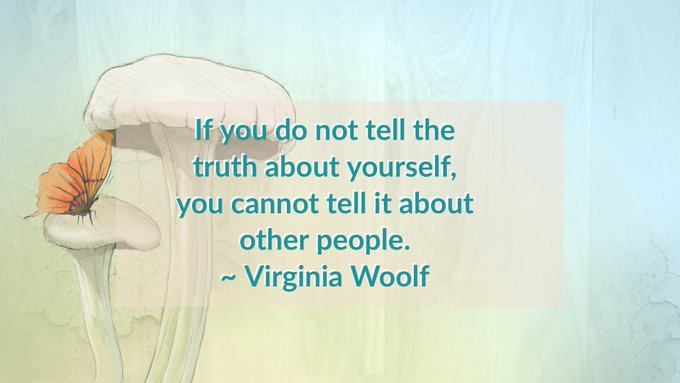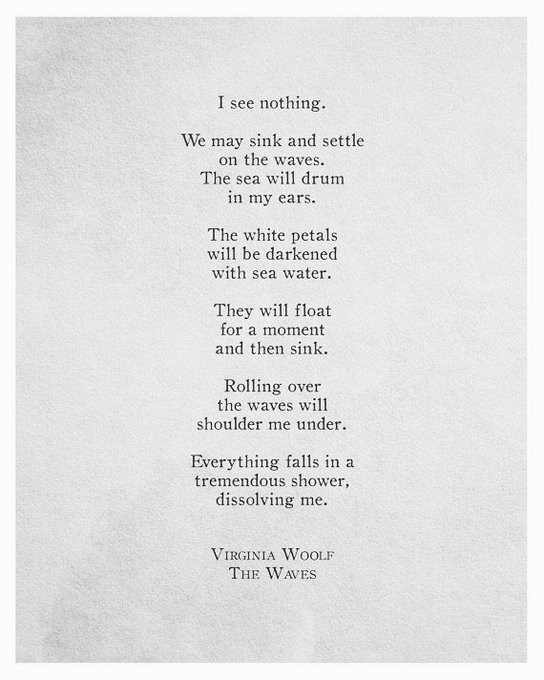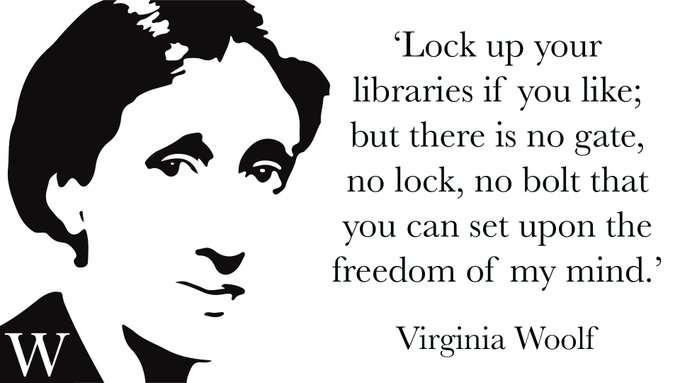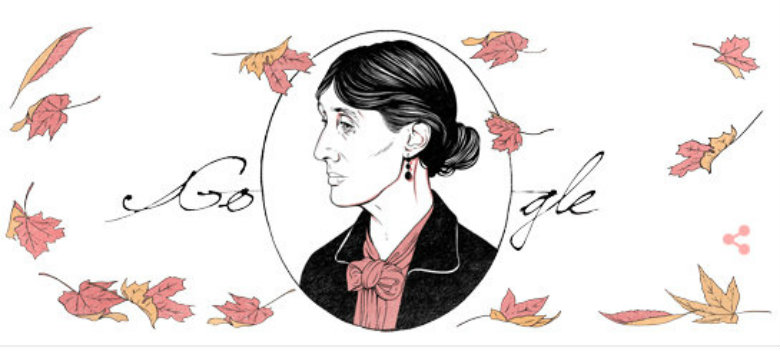
The life of Virginia Woolf is being celebrated with today’s Google Doodle. “Created by London-Based illustrator Louise Pomeroy, today’s Doodle celebrates Woolf’s minimalist style…her iconic profile surrounded by the falling autumn leaves (a frequent theme in her work),” Google stated.
Virginia Woolf, a critically acclaimed essayist and novelist known for her feminist views, became one of the most highly regarded and significant figures of twentieth century modern literature.
Though born into privilege, Woolf hardly lived a life without pain and suffering, having lived through World War I among other hardships. The author detailed many of her life experiences through her writings.
Woolf published her first novel, The Voyage Out, in 1915.
Today Woolf’s life is celebrated through a new Google Doodle to commemorate her 136th birthday. Here’s what you need to know:
1. She Was Born in Kensignton, London, United Kingdom in 1882 to a Prominent Family
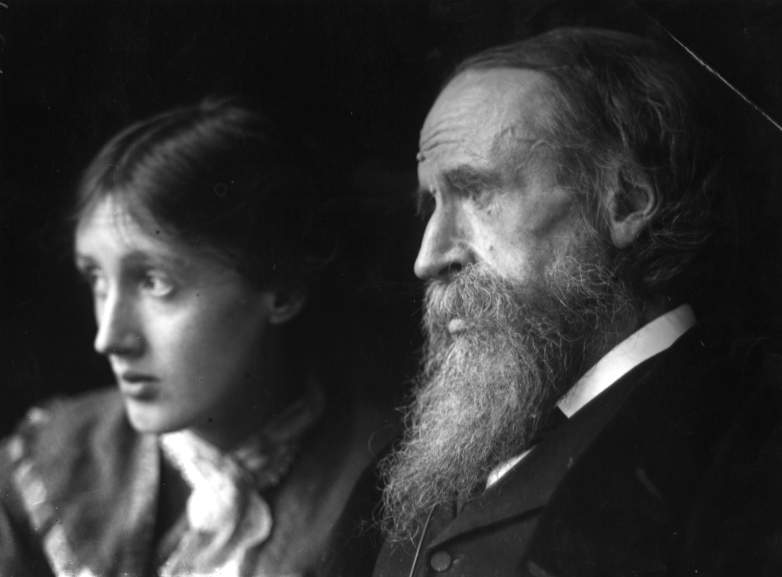
Virginia Woolf nee Stephen (1882 – 1941), the English novelist, critic and essayist and sister of Vanessa Bell is pictured with her father, Sir Leslie Stephen. Original Publication: People Disc – HO0257 (Photo by George C Beresford/Getty Images)
Woolf was born as Adeline Virginia Stephen on January 25, 1882, to a privileged family in Kensington, London.
The woman appears to have followed the lead of both of her parents, who were also writers.
Woolf’s father, Sir Leslie Stephen, was a prominent figure of his time, serving as both an author and historian. Her mother, Julia Prinsep Stephen, was born in India and became famous for being “a model for several Pre-Raphaelite painters,” according to Biography.com. Julia also worked as a nurse and detailed the occupation in a book that she wrote.
Woolf’s parents were both married and widowed before meeting each other, and she grew up in a large family among four full siblings and three half-siblings.
2. She Suffered Her First Mental Breakdown After the Death of Her Mother in 1895, & Was Instutionalized After Her Father’s Passing in 1904
In a family newspaper named after the home they grew up in, Hyde Park Gate, Woolf and her sister, Vanessa Stephen, along with the help of brother Julian Thoby Stephen, wrote about the lightheartedness and candid happenings of their everyday life. The publication, which began when Woolf was only 10, offered a glimpse into her future as a writer.
However, life would not always be as it initially appeared through the sibling’s writings.
In 1895, at the tender age of 13, Woolf suffered a mental breakdown after tragically and suddenly losing her mother to rheumatic fever. Only two years later she lost her half-sister, Stella, who had taken over as a motherly figure to the family after the death of Julia.
In 1904, death haunted Woolf’s life yet again when she lost her father to stomach cancer. The depressing period led to the author being briefly institutionalized.
3. A Gay Man Proposed to Her, But Only Days Later Retracted it & Suggested She Marry Leonard Woolf
Woolf was briefly engaged to a close friend and fellow writer, Lytoon Strachey, whom was homosexual but still wanted to be married, perhaps as a strategy to hide his sexuality.
However, only days after the February 17th 1909 proposal, Strachey took back the plan to marry Woolf, instead suggesting to her future husband, Leonard Woolf, that he should take her as his bride. The letter stated:
The day before yesterday I proposed to Virginia. As I did it, I saw that it would be death if she accepted me, and I managed, of course, to get out of it before the end of the conversation. The worst of it was that as the conversations went on, it became more and more obvious that the whole thing was impossible. The lack of understanding was so terrific! And how can a virgin be expected to understand? You see she is her name. If I were either greater or less I could have done it and I could either have dominated and soared and at last made her completely mine, or I could have been contented to go without everything that makes life important. Voilà! It was, as you may imagine, an amazing conversation. Her sense was absolute, and at times her supremacy was so great that I quavered.
I think there’s no doubt whatsoever that you ought to marry her. You would be great enough, and you’d have too the immense advantage of physical desire. I was in terror lest she should kiss me. If you came and proposed she’d accept. She really really would.
4. Woolf’s Writings Revealed a Dark Past, & She Committed Suicide by Drowning Herself in a River
While the family newspaper depicted a happy upbringing, Woolf’s childhood was stricken with sexual abuse of the girl at the hands of her half-brothers, George and Gerald Duckworth. Details of the dark period are chronicled in two essays, 22 Hyde Park Gate and A Sketch of the Past.
Overwhelmed by her past, Woolf took her own life on March 28, 1941 at the age of 59.
In similar letters written to her sister, Vanessa Bell, and her husband Leonard, Woolf indicated that she was going to take her own life. Though she did not detail where or how she was planning to do so, her family assumed their loved one had drowned herself after finding her hat and cane on a riverbank.
According to the The New York Times, the coroner read the note written to Leonard by his beloved wife.
“I have a feeling I shall go mad,” the note stated, according to the publication. “I cannot go on any longer in these terrible times. I hear voices and cannot concentrate on my work. I have fought against it but cannot fight any longer. I owe all my happiness to you but cannot go on and spoil your life.”
Her husband stated that Woolf had been depressed for quite some time.
5. Her Husband Found Love Again & Passed Away in 1969

GettyWriter Leonard Sidney Woolf (1880-1969) at Monk’s House, Rodmell, East Sussex, circa 1950. (Photo by Hulton Archive/Getty Images)
Following Woolf’s death, Leonard met and fell in love with Trekkie Parsons, the sister of a close friend.
After his death on August 14, 1969, Leonard left the woman his estate, manuscripts and publishing rights.
However, his ashes were laid to rest alongside Woolf in the backyard of a home they shared.
